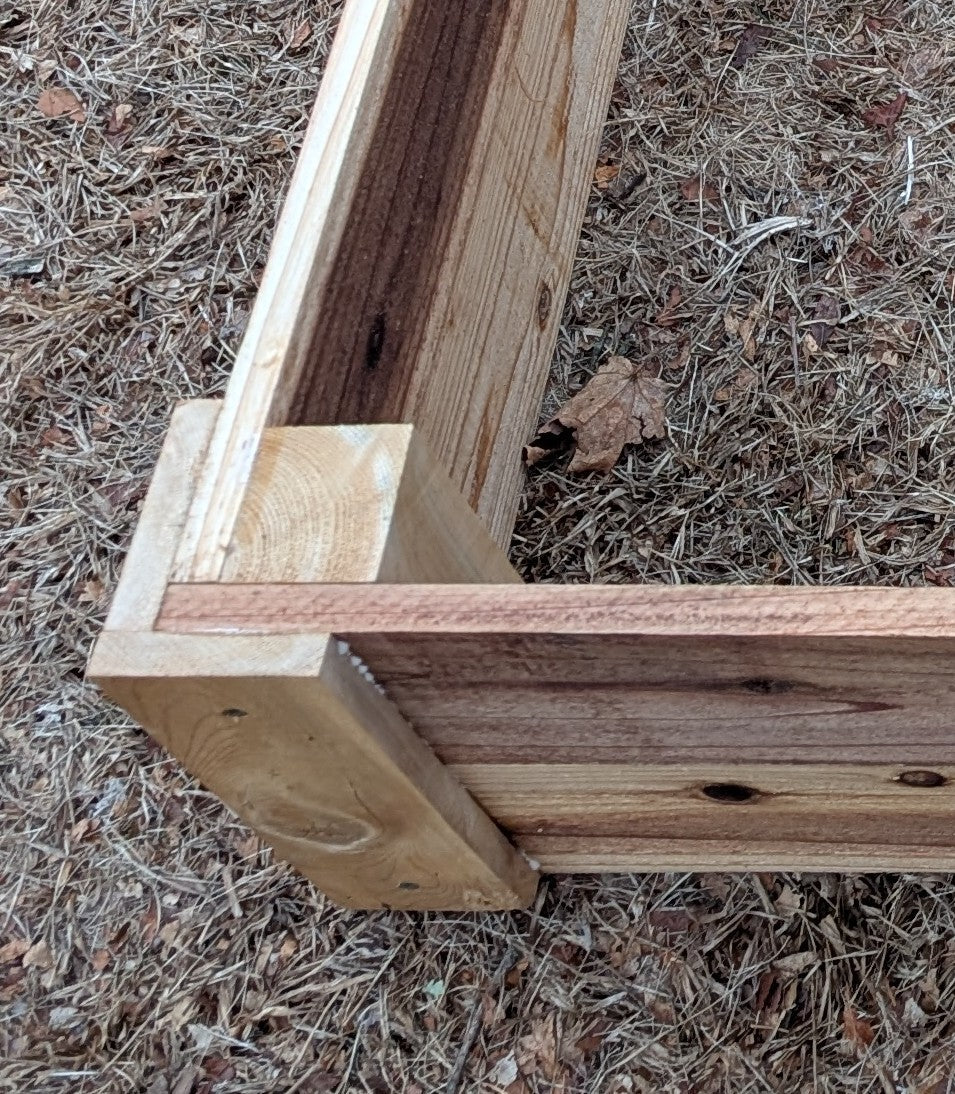
Outdoor Items - Building for Weather Exposure
I thought it time to write about how I construct the planters and raised beds I sell and why I build them the way I do.
One Truth - All wood will succumb to rot and decay sooner or later
Cedar is rot resistant - not rot proof. How you build and connect the wood to each other will greatly influence whether rot kicks in sooner or - as I try to build for - later.
Any opening in wood invites moisture, bacteria and fungi in. Openings can be nail or screw holes, natural holes in the wood or splits and cracks. The closer these injuries are to the end grain, the faster the wood will deteriorate. If it is then also in constant exposure to moisture with little chance to dry out, then that will contribute to even faster decay.
Construction - The base that all else stands upon
Some of the things I do to minimize water impact:
You might notice that all of my outside items have common elements that contribute to longer structural life:
Rely on Glue to hold things together
The wood is mainly held and supported by glue, not nails or screws. Good quality, externally rated glue (I use Bossdog Glue) will penetrate wood fibers and hold the pieces together and also lock out moisture. Nails and screws just hold the wood in place until the glue sets and then add some extra stiffening so that repeated movement does not weaker wood connections too easily.
The screws I uses are meant more to be permanent clamps that help hold the wood tight to each other while the glue dries. Any internal screws are hidden and covered by multiple layers of wood and glue to hide them and eliminate places water can penetrate from.
Eliminate as much end grain exposure of all main parts that are structural
Medium to large items usually have internal corner braces - usually cedar 2x2's. This is what the walls are actually connected to. If end and side boards just being glued and nailed to each other they fail more easily as there is not much surface that hold things together.
An exception to this is the small 16x16 planter, it does not have 2x2's in the internal corners - at that overall size these braces would not contribute much to stability so I don't add them.
Outside Corner Bracing
Corner bracing is glued on top of the outside of the carcass corners and serves several functions:
- Are often the actual legs for a planter
- They add surface area for top rails to attach to the planter/bed carcass
- Cover the end grain of the boards that make up the actual carcass. The glue used seals out moisture and any existing splits in the end grain (cedar is very prone to splits)
- Covers the hold of brad nails and screws that connect the carcass sides to the internal 2x2's or other siding boards - sealing those holes off from water penetration.
- Add stiffness to the carcass and supply a very large glued surface for the boards to adhere to so they don't start warping and breaking apart.
Connect the Outside to the Inside
By utilizing this sandwich method above, the boards making up the carcass connect internally and externally to non-moving structural parts. I then usually drive at least two screws through the outside corner brace through the carcass board into the internal 2x2. This keeps the outside and inside bracing elements connected and stop them from moving against each other. These screws are driven through while the glue is still fresh, which pulled some glue into the screw holes, sealing them against moisture penetration.
The Farmer Vic Applied Finish
I offer a finish applied version of all of my outside items. This is not because I enjoy finishing cedar so much, it is because I can get to the most vulnerable parts of the wood and finish them BEFORE the planters are put together - that makes for better protection and a longer lasting product.
After the parts are all cut I add Outdoor Defense Oil to the end grain and to the long grain of all boards. After the planter/bed is built, I then apply the oil to all the flat surfaces and add a second (or more) coat to any exposed end grain and long grain. This is why my finished items take longer as I need to let the oil cure a bit before construction so it does not interfere with the glue during and still gives maximum protection to all pieces.
If you opt to finish an unfinished planter/bed yourself, some parts are inaccessible and cannot be reached to apply a finish (I would not be able to reach them at this stage either). Don't misunderstand me though - finishing them by yourself is still ALLOT better than not finishing them at all, it is just that I can get to a few parts that add that certain "plus alpha" level to the protection.
